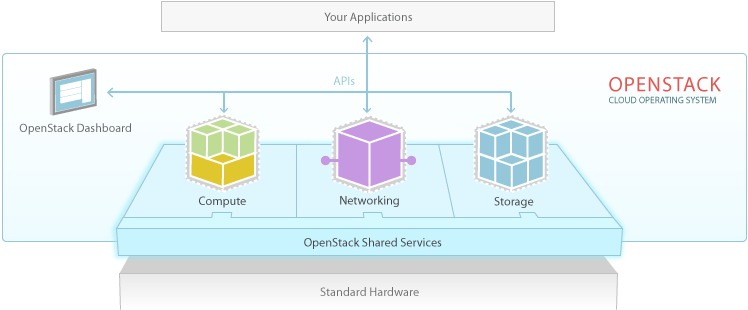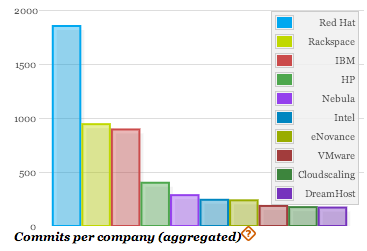
OpenStack has been around since 2010, but it wasn’t until 2012 that the open-source cloud computing project really took off. Since Rackspace established the OpenStack Foundation in September 2012, the project has exploded to over 1,000 code authors, and is now one of the world’s largest open-source communities, arguably even bigger than the Linux community. Given how central open source has become to software development, generally, it’s worth analyzing why OpenStack has taken off.
It’s The Foundation, Stupid
While OpenStack always offered great promise, it wasn’t until Rackspace let go of the wheel that the project really exploded. This isn’t to suggest that Rackspace’s stewardship was somehow bad, but rather that moving to a foundation made the project more inviting.
While Rackspace used to dominate code commits, now Red Hat is OpenStack’s biggest committer, with IBM quickly moving in on the second spot.

This is pretty amazing. Just a year ago Rackspace was in control. Now it’s just one of the community. A key member of the OpenStack community, to be sure, but it’s a testament to the vitality of the OpenStack community that Rackspace is no longer the top code committer.
A Common Enemy
Equally impressive is how fast the number of code authors has increased, now at 1,031 at the time of publication. Part of this might be due to the foundation governance model, but a number of open-source projects – MySQL, JBoss and others come to mind – have been exceptionally succeessful with one primary developer.
Hence, while moving to a foundation certainly helped, OpenStack’s success comes down to a range of different factors.
Among them is simply need. As The Register‘s Jack Clark somewhat humorously highlights, “OpenStack is big because Amazon has terrified everyone into contributing code.” Or as Mat Keep, director of MySQL Product Management and Marketing at Oracle, puts it, vendors felt like they could only compete with Amazon as a cohesive unit. Importantly, Rackspace didn’t directly compete with the IBMs and Red Hats of the world, as Inktank vice president Neil Levine suggested to me over IM, and hence “companies felt less awkward about participating.” He concludes:
“It’s easier to join a project where the authors have different business models to you (as a software business).”
These are important motivations, sure, but there’s more to the OpenStack story. After all, if a common enemy and orthogonal business models were enough, we would have seen OpenOffice mount a serious challenge to Microsoft Office years ago, given its backing by Sun and then Oracle, among other industry titans.
Making Contributing Easy
No matter the motivation to contribute and collaborate, the best open-source projects make it easy to do so. As Andy Grimm, an operations support engineer for Red Hat’s OpenShift, highlights, OpenStack chose both the most developer-friendly license (Apache v2) and a highly approachable programming language (Python), significantly lowering the legal and technical bars to participating.
Couple that with a super-simple setup (“it just works (startup in 2 lines of code)”, as MongoDB community manager Francesca Krihely suggests and a modular architecture, echoing Rishidot Research principal analyst Krishnan Subramanian, and you have all the right elements for break-out success.
Market Timing And More Than A Hint Of Luck
In sum, it’s hard to assign full credit to any particular element of OpenStack’s make-up in its runaway community success. More likely OpenStack has boomed due because it sits at the nexus of several key components of successful open-source communities. Some of this stems from market timing and luck, but much of its success also derives from laying essential infrastructure for open-source success (license, language, modularity, etc.).
Back in 2006 I laid out the essential elements for architecting a successful open-source project. Among these were market timing, the right license, how applicable the code was to pressing business problems, code modularity and more. While other projects have attempted to pull these together, few can claim to have done so with as much precision, or success, as OpenStack.
Which is why it now has 9,685 members standing behind the project. That’s real community.
















